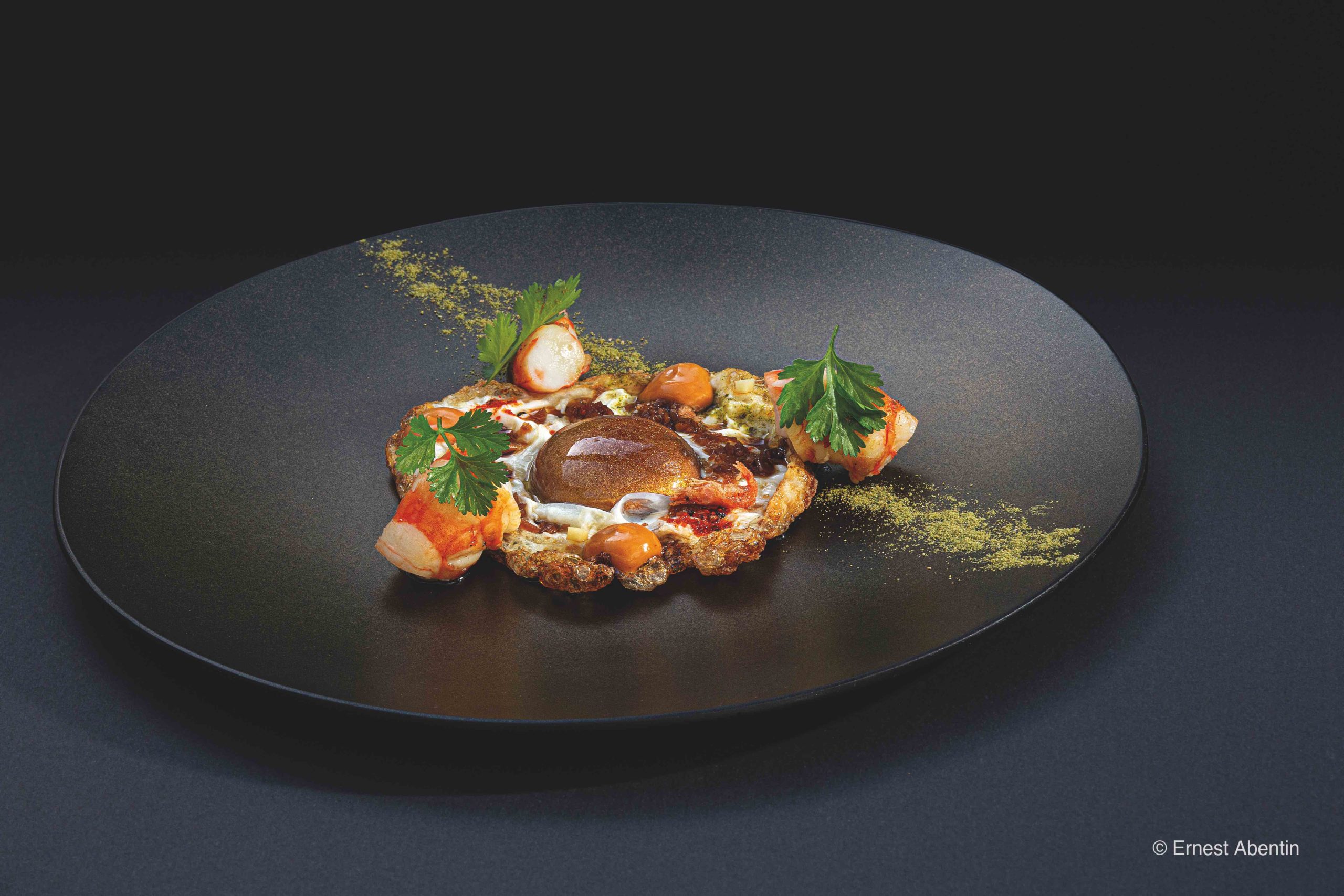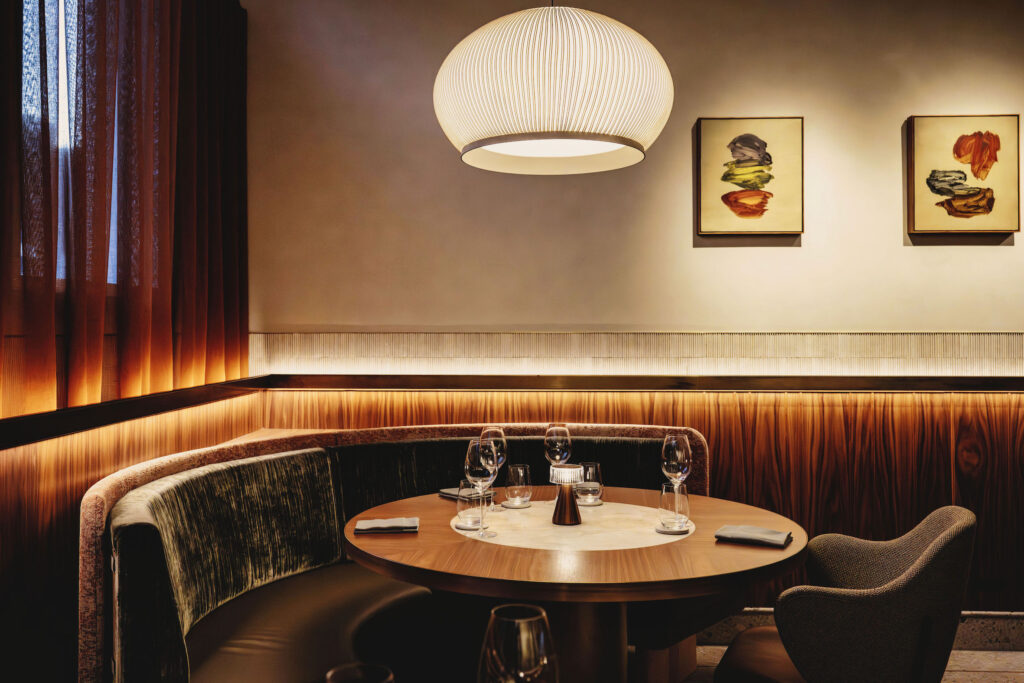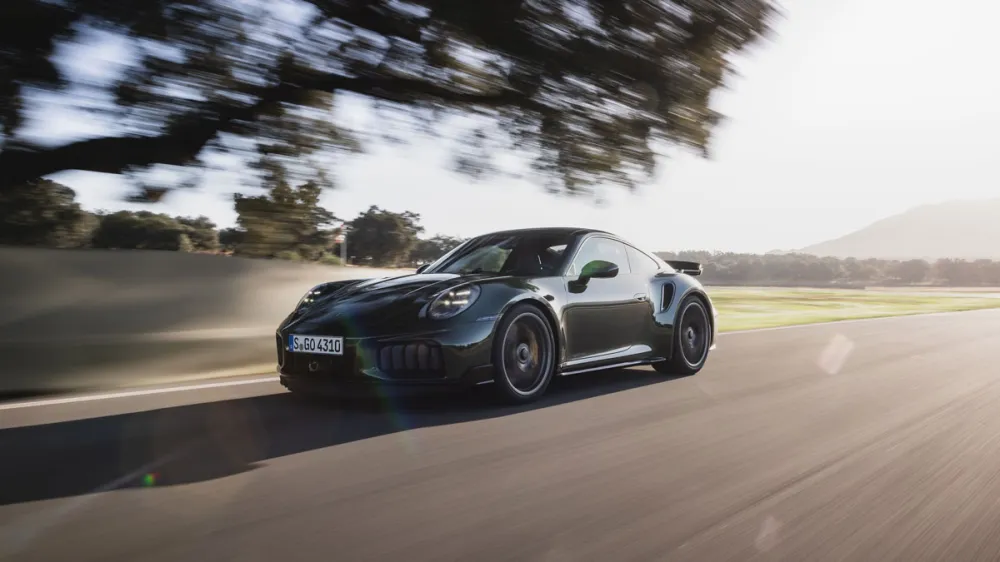Sample this year’s must-try restaurants across the globe, selected by the editors at Robb Report Monaco & Côte d’Azur.
EXPERIMENTAL CUISINE: DISFRUTAR
Barcelona
When you know that the three chefs behind Disfrutar met at the iconic El Bulli, you know you’re in for a wild gastronomic ride. After the restaurant shuttered its doors in 2011, Oriol Castro, Eduard Xatruch and Mateu Casañas decided to join creative forces. And after launching Compartir in 2012, the trio opened their second restaurant, Disfrutar, in 2014. Ten years on, it continues to push the boundaries of cuisine by blending modern cooking techniques, the very best ingredients and a hefty dose of imagination.
The menu changes a couple of times a year, but to give you an idea of what to expect from the experimental triumvirate, past dishes have veered from the decadent—think the Panchino doughnut filled with caviar and cream cheese—to the avantgarde Fear: The Prawn, where diners must search for their supper in a pool of dry ice.
ARTISTIC DISHES: DiverXO
Madrid
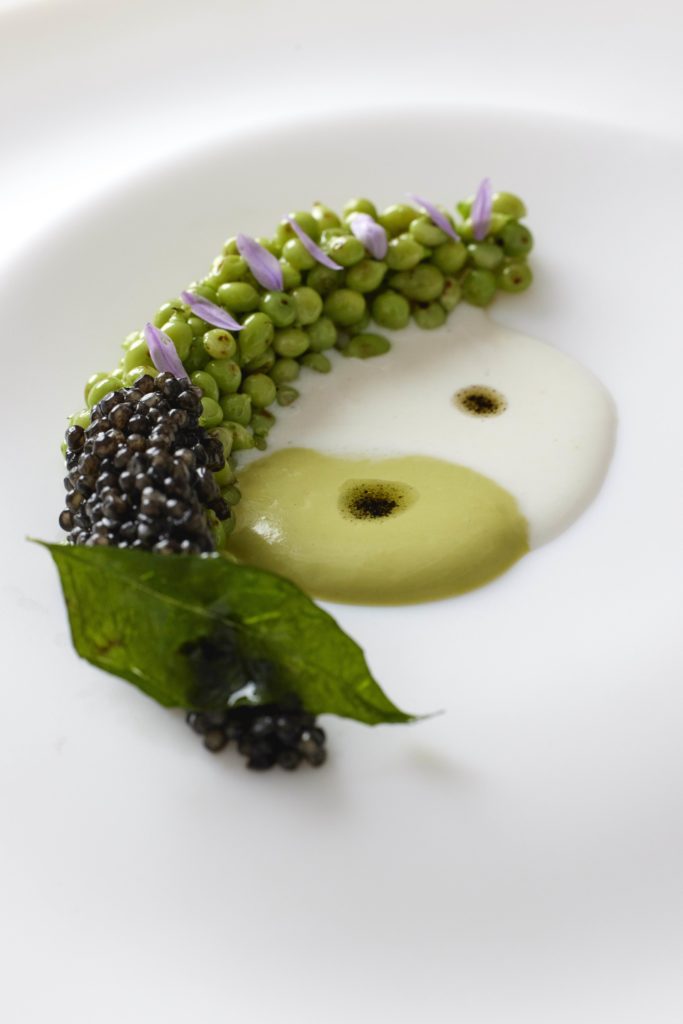
Dabiz Muñoz would surely agree that sometimes, dreams do come true. The Spanish chef originally wanted to be a footballer until family visits to Abraham García’s renowned restaurant Viridiana inspired him to follow a career in gastronomy. From the get-go, he set his ambitions high, with the goal of opening an eatery that would be so successful clients would struggle to get a reservation.
His famed Madrid restaurant DiverXO now not only has the waitlist that Muñoz dreamed about but is also the only restaurant in the city to hold three Michelin stars. His triumph has certainly proved his sceptical father wrong, who used to tell the young Muñoz “You’ll achieve that when pigs fly!”, a response that has inspired DiverXO’s pig-themed artwork and crockery. Even his avant-garde tasting menu is named “The Flying Pigs Cuisine”.
Guests can expect 12 courses of colourful, artistic, offbeat dishes that bring together the chef’s Spanish roots with Asian influences that Muñoz picked up at Hakkasan and Nobu—such as XO tapas of roasted baby octopus with jamón essence, and mochi bonbons with Thai-style dulce de leche and finger lime.
SEASONAL DINING: TABLE BY BRUNO VERJUS
Paris
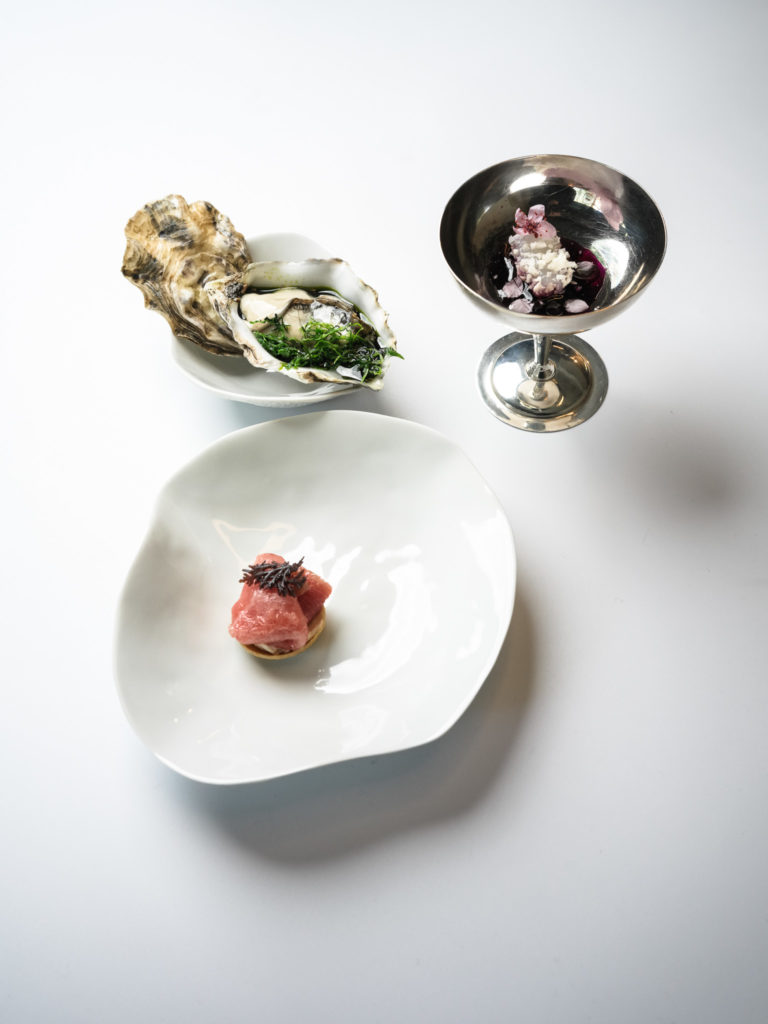
In Paris’s lesser-visited 12th arrondissement, an unassuming terrace hides what is one of the city’s most celebrated restaurants, simply named Table. Its chef Bruno Verjus is also one of gastronomy’s most interesting characters: he studied medicine, lived in China, and worked as an entrepreneur, photographer, author, radio commentator and food critic before launching his restaurant at the more mature age of 54.
Verjus might have no experience in the restaurant business, but Table now has two Michelin stars and a loyal following of gourmands who flock to watch him and his team plating up the poetically named Colour of the Day menu.
Verjus’s respect for seasonal ingredients and the French terroir, rather than his own whims, drives the daily-changing menu, and the chef is known for working closely with artisan suppliers to source the highest-quality ingredients. The restaurant is also feted for its wine list and, more unusually, also offers a pairing with a carefully curated menu of fine teas.
GASTRONOMIC VOYAGE: BELCANTO
Lisbon

Located in Lisbon’s beautiful São Carlos Square, Belcanto originally opened in 1958 as a gentlemen’s club that drew the city’s elegant elites. José Avillez took over the address in 2012 and quickly succeeded in turning it into one of Portugal’s finest restaurants. The eatery gained its first Michelin star within a year of launching and its second in 2014, making Avillez the first Portuguese chef in the country to achieve the two-Michelin-star accolade.
In 2019, Avillez moved Belcanto into a new space next door, which not only offers guests more space but also a closer connection between the dining room and kitchen for an enhanced gastronomic voyage. To create his contemporary interpretation of Portuguese cuisine, Avillez finds inspiration in every corner of his country’s diverse terroir, from the mountains to the vineyards to the coastline. And it’s all perfectly complemented by a predominantly Portuguese wine list.
Whilst guests can go à la carte, it would be a shame to miss the Belcanto Tasting Menu, which showcases the story of Portuguese food and the full evolution of Belcanto, from the beginning until the present. But for the ultimate experience, book seats at the chef’s table and watch Avillez and his team in action.
MEXICAN FUSION: KOL
London
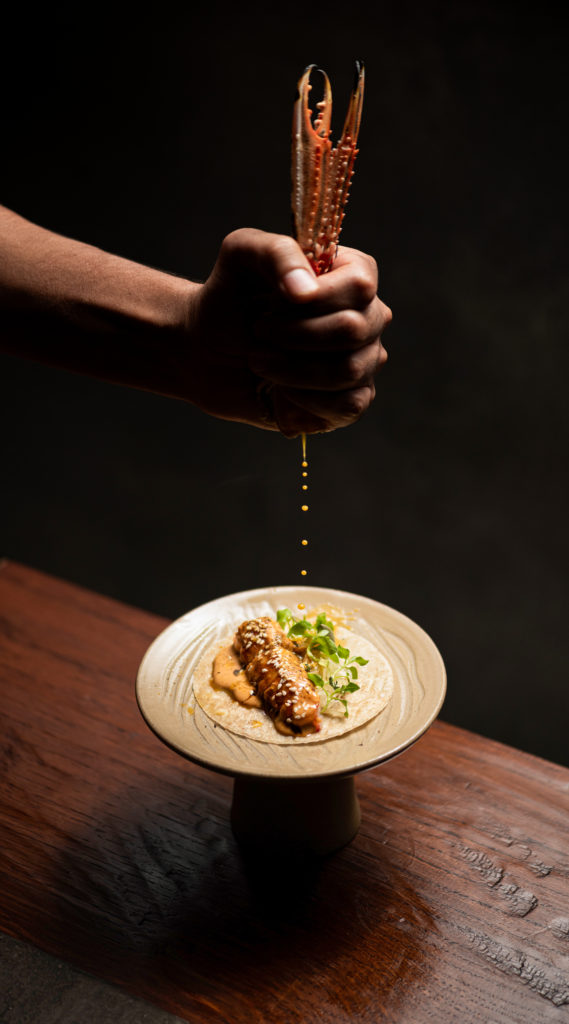
When Mexican chef Santiago Lastra opened KOL in 2020, he set himself quite a challenge: to serve up the authentic cuisine of his home country using seasonal ingredients from his adopted one. The concept wasn’t totally new to him. Lastra spent time at the Nordic Food Lab in the University of Copenhagen trying to make tortillas with Nordic grains. But given that Britain doesn’t enjoy the same weather as Latin America, sourcing much of the produce essential to Mexican cooking wasn’t an option.
Whilst Lastra has allowed himself to import corn, chocolate and chillies, for the rest of the menu he has had to get creative, replacing lime with sea buckthorn, or serving up a mole made with purple carrot alongside a more British touch of fermented blackcurrant.
The result is a unique offering that celebrates both cultures and continues to surprise with each season, although Lastra’s signature dish, the langoustine taco, has been on the menu since the beginning. Don’t miss a drink in KOL’s subterranean bar, The Mezcaleria, which serves up classic cocktails with a Mexican twist.
SENSORY EXPERIENCE: MUGARITZ
San Sebastian

Chef Andoni Luis Aduriz might have been leading the kitchens of Mugaritz for more than 25 years, but he doesn’t look set to run out of ideas any time soon. He describes his two-Michelin-star restaurant as a research lab, and in order to function as one, Aduriz closes Mugaritz for three months every year to develop around 100 new dishes, 20 to 25 of which will end up on the menu.
But it’s not a one-man show. During this annual creative process, Aduriz invites experts from worlds outside of gastronomy, such as art and journalism, with a view to bringing fresh ideas, literally, to the table.
This curiosity and desire to push beyond traditional gastronomic boundaries has led to imaginative dishes such as Face to Face, in which Aduriz created an edible “skin”, and drinks that come in the form of a sake-infused handkerchief rather than a liquid. The three-hour menu certainly stimulates all five senses, never fails to surprise, and offers an experience which is hard to forget.
LOCAL HERO: STEIRERECK
Vienna
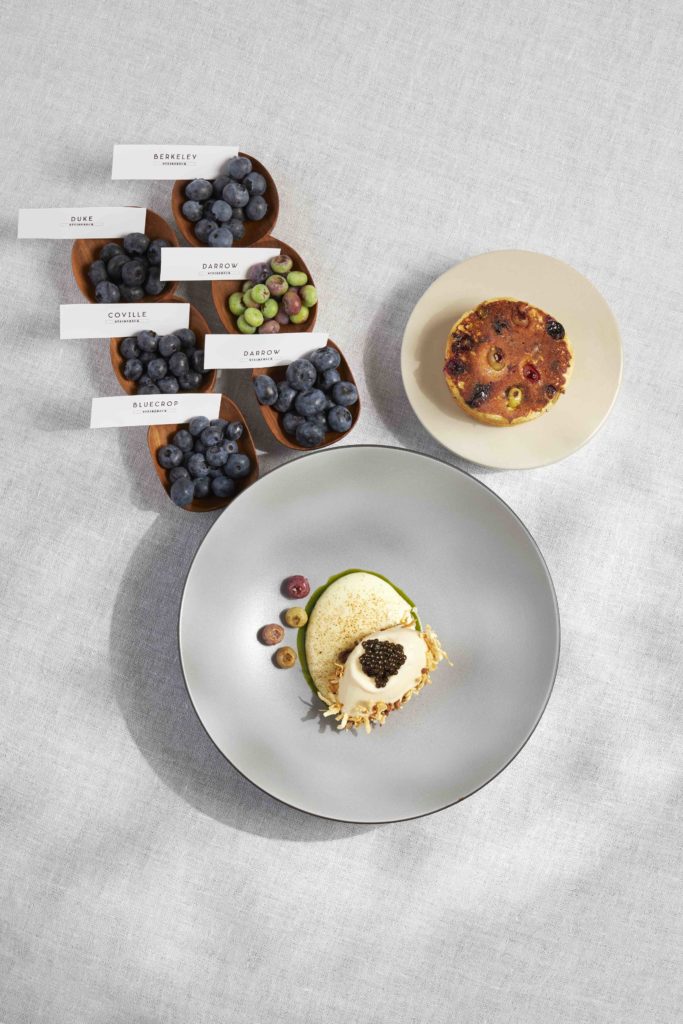
An ultra-modern mirrored glass extension on Steirereck’s original 1904 building signals what chef Heinz Reitbauer is serving up inside his minimalist wood-and-concrete dining room. Since taking over the family restaurant nearly 20 years ago, Reitbauer has put a contemporary spin on traditional Austrian cuisine by merging new gastronomic techniques with unknown or forgotten Austrian ingredients such as rare breeds of meat and fish.
Reitbauer combines this local produce with herbs from the restaurant’s rooftop and vegetables from Steirereck’s own farm to create fresh and innovative combinations which really let the quality ingredients shine. Case in point: bouchot mussels with carrot, topaz apple and verbena, and rhubarb and peach with gooseberries and pepperwort.
Also look out for the various trolleys on offer, including carts for aperitifs and digestifs, teas, cheeses, and one laden with 25 different varieties of Austrian bread.
FOOD AS THEATRE: ALCHEMIST
Copenhagen
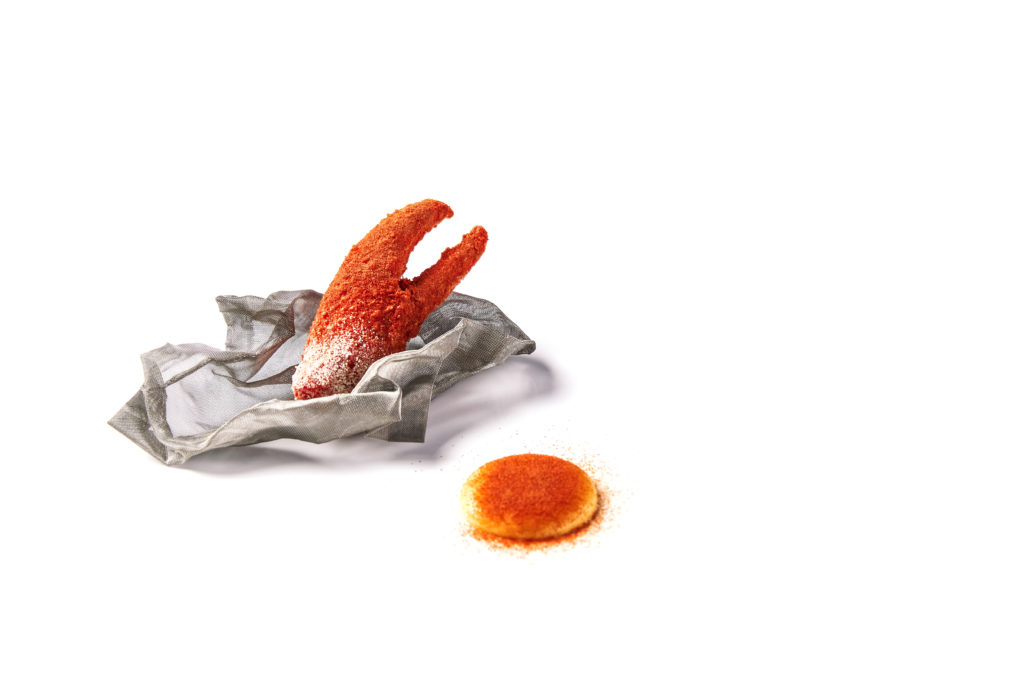
Rasmus Munk has created not only a restaurant but another world at Alchemist. And after walking through the monumental two-tonne bronze doors in a remote part of Copenhagen, what else would you expect? Munk brings together food, drama, art and aesthetics to create a fully immersive experience that places guests in a planetarium dome with no natural light. Whilst you lose track of the next three to six hours, Munk plays various graphics on the surrounding screens and serves 50 “impressions” from his Holistic Cuisine, which finds inspiration in everything from art and music to social and environmental issues.
Behind the theatre lies food with a deeper meaning: the Guilty Pleasure is a coffin-shaped chocolate bar that raises awareness of child labour in cocoa plantations; while the eerily realistic Burnout Chicken resembles a pair of chicken feet (it’s actually a deboned chicken wing stuffed with a chicken soufflé and glazed with teriyaki sauce) and is served in a tiny cage to highlight the poor conditions of farmed poultry. Munk doesn’t forget to have fun though. The Andy Warhol dessert (a delicious combination of banana sorbet, cachaça, tonka beans and caramelised egg yolk) is an interpretation of the banana on the cover of the 1967 album, The Velvet Underground & Nico.
INDIAN ADVENTURE: TRÈSIND STUDIO
Dubai
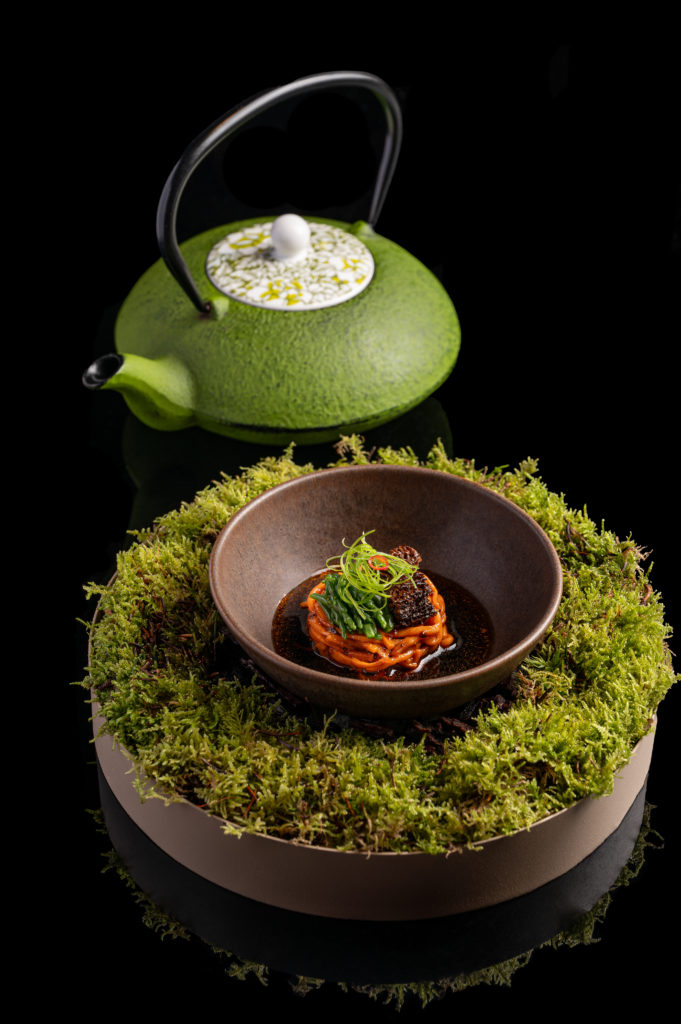
After achieving success with Trèsind at the One&Only Royal Mirage hotel, chef Himanshu Saini took his Indian cuisine to new two-Michelin heights at the standalone Trèsind Studio. Saini bases his dining room around the Indian phrase “Atithi Devo Bhava”, which means “Guest is God”.
So expect a warm welcome in the intimate 20-seat dining room, where the chef himself talks guests through each dish to foster a better understanding of India’s rich, varied food culture. Rather than create a signature dish, Saini prefers to elevate humble dishes, breads and street foods. The result is offerings such as shiso papadum with yoghurt crémeux and garden herbs, or missi roti with nopales curry and cultured butter.
Saini has also steered away from the classic food and wine pairing, instead tapping Italian mixologist Domenico Carella to create a menu of inventive cocktails, natural wines, and homemade sodas and kombuchas, to complement his cuisine.
GOURMET SUSTAINABILITY: CETO
Roquebrune-Cap-Martin
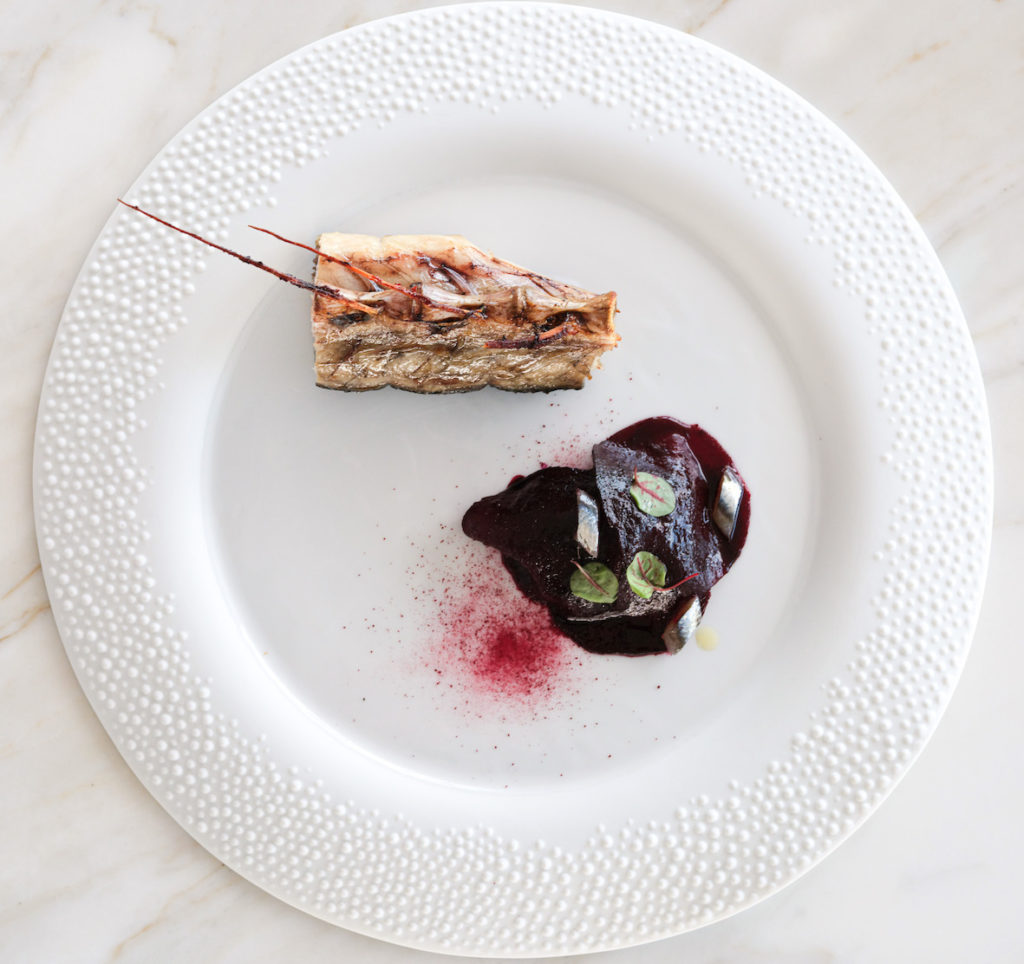
Mauro Colagreco knows the value of a spectacular view. After opening Mirazur on a hillside overlooking Menton, he moved further down the coastline, and higher up, to open Ceto on the 14th floor of the Maybourne Riviera. Here, Colagreco has snagged one of the best outlooks on the Riviera. Ceto’s sweeping vista takes in France, Monaco, Italy and endless panoramas of the Mediterranean—perfect for enjoying a sunset apéritif from the outdoor terrace bar.
The seafood-driven menu not only celebrates the local produce but aims to preserve it. Colagreco bases his cuisine around the same sustainability principles that he champions at Mirazur, and works with the Oceanographic Museum of Monaco to fish sustainably with minimum impact on the seabed.
The chef continues to take extra care once the seafood reaches the restaurant, employing his specially designed maturation chamber to create a depth of flavour that elevates even the most everyday catch. On a coastline filled with seafood restaurants, Ceto also stands out for its more daring use of ingredients; don’t be surprised to find sea lettuce in a ravioli, or nori seaweed layered with bourbon vanilla and toffee in a classic mille-feuille.
ECLECTIC MENU: THE JANE
Antwerp
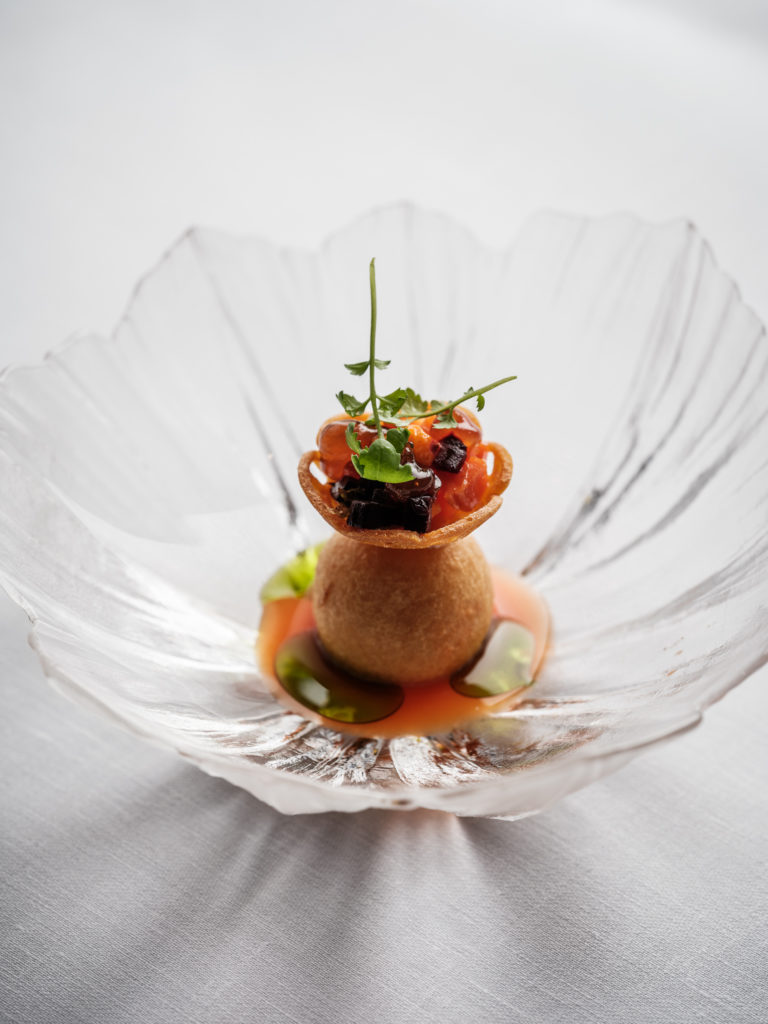
The Jane’s setting in a former chapel certainly makes an appropriate backdrop for those who worship gastronomy. It also makes for one of the world’s most beautiful restaurants, where chef Nick Bril serves up his two-star cuisine under high vaulted ceilings, original stained glass windows and a new addition to the church, a striking starburst chandelier.
Bril’s eclectic cuisine is a mix of all the things he likes, although fish and seafood play a starring role in the four-hour tasting menu. The well-travelled chef takes inspiration from various countries and continents—Indian spices, Asian street food and classic French techniques. There’s a local aspect to the menu too as much of The Jane’s produce is grown close to the restaurant on the roof of an old warehouse.
Look out for complex signature dishes including: Norwegian scallop, salsify, ceps and autumn broth; canard de challans, Jerusalem artichoke, corn and arabica; poached European lobster with smoked beetroot and royal Belgian caviar; and not forgetting Bril’s infamous dashi butter sauce.

